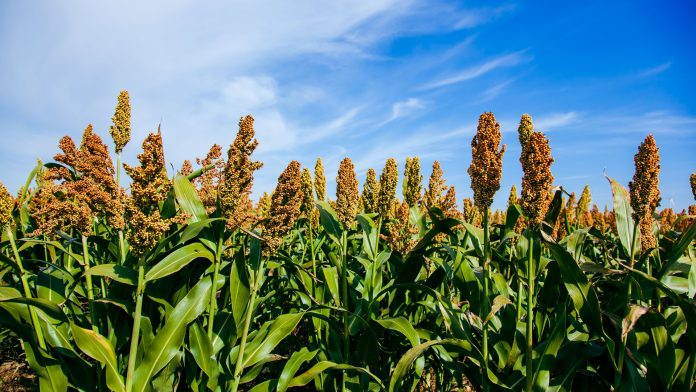A study conducted at Texas A&M University shows that the annual crop can sequester atmospheric carbon dioxide.
Carbon and carbon dioxide
The Earth’s atmosphere is experiencing an increased amount of carbon dioxide and a shortage of carbon in the soil. However, scientists have discovered that bioenergy sorghum has the potential ability to provide meaningful relief from both issues.
Findings from the study
The US Department of Energy Great Lakes Bioenergy Research Center, and the Advanced Research Projects Agency-Energy funded the project conducted into carbon dioxide and carbon by senior investigator, John Mullet and his team.
Scientists found that bioenergy sorghum hybrids captured and sequestered significant amounts of atmospheric carbon dioxide in the soil. The crop can improve soil fertility and potentially even carbon credits to offset greenhouse gas emissions.
Additionally, researchers revealed that the study shows that bioenergy sorghum’s unusually deep root system can reach sources of water and nutrients untapped by other annual crops. These results regarding carbon dioxide suggest that the crop can help manage fertiliser runoff from other annuals in crop rotation.
Texas A&M’s annual bioenergy crop
Bill Rooney, PhD, member of Borlaug-Monsanto Chair for Plant Breeding and International Crop Improvement, and a key collaborator on this study, spearheaded the development of bioenergy sorghum hybrids over the past twenty years. For the past fifteen years Rooney and Mullet have collaborated to successfully develop the bioenergy sorghum capable of providing significant reprieve from the issues associated with atmospheric carbon dioxide.
Furthermore, Rooney and Mullet have been developing bioenergy sorghum varieties to produce an ideal annual bioenergy crop. The hybrid used in the most recent study creates high yields of biomass for fuel, power and bioproduct generation. The crop was also observed to have excellent drought resilience, good nitrogen-use efficiency and a deep root system.
“There is an assumption that the most sustainable bioenergy crops are perennial because they require fewer inputs and can sequester more biomass than annuals,” Rooney said. “Those statements are true, but U.S. agriculture always requires annual cropping varieties and options as well.”
Carbon and soil fertility
Researchers found that an acre planted with the bioenergy sorghum hybrid accumulates roughly 3.1 tonnes of dry root biomass over the crop’s 155 day growing season. As well as this, the roots were found to have travelled up to 6.5 feet deep into the soil over the growing season.
These measurements mean scientists can now predict the amount of atmospheric carbon dioxide potentially captured inside these roots. These numbers will also shed light on how many carbon credits a planted field might earn. “Frankly, the numbers are quite favourable,” Rooney said.
The numbers collected also provide an important understanding regarding the crop’s potential to improve soil fertility and water-holding capacity by replenishing soil organic carbon. However, previous research his shown that in the US, soil organic carbon levels have fallen by approximately 50% over the past 100 years in land that has been planted with annual crops.
“This drop in soil carbon levels could be due to cropping practices, microbial activity and changing land use,” Rooney commented. These complex factors mean that predicting how long it might take to replenish lost carbon requires sophisticated modelling, and the restoration process is likely to take many decades.
“For modelling, they need to have a realistic number to start with,” Rooney explained. “We haven’t historically had enough info to do that, but this study provides a benchmark for scientists and policymakers.”
Further research
In this study, Rooney and his team managed the field trials and helped with phenotyping. Mullet and his team characterised the root system and the genes expressed within. “Over multiple years, the study considered in-depth how one bioenergy sorghum hybrid interacts with two soil types,” Rooney said.
However, Rooney stresses that further research is required: “In this study, we didn’t sample the genetic diversity of bioenergy sorghum at all, except for one standard type,” Rooney said. “And looking at multiple environments and expanding the range of we are evaluating is essential.”
Sustainable bioenergy production system
Modelling studies estimate that millions of acres of abandoned and marginal cropland in the US are available for planting, many of which are in the Gulf Coast region. “This region is ideal for bioenergy sorghum production because of ample rainfall, long growing seasons and low competition with grain crops,” Mullet said. “Yet despite the Gulf Coast’s excellent potential for biofuels production, there are no bioenergy research centres and very few biorefineries in the region.”
Furthermore, the crop has improved over the years in terms of productivity, resilience and composition, as have the impacts on atmospheric carbon dioxide and carbon in the soil, due to Mullet’s and Rooney’s efforts. The carbon captured in biofuels and bioproducts at biorefineries and bioenergy sorghum roots could generate carbon credits, potentially benefitting producers and industry.
Mullet is now working to attract industry and government funding to help develop the next generation of biorefineries designed to use biotechnology sorghum biomass to produce biofuels, bioproducts, and biopower.
Mullet concluded: “Recently, I’ve decided the most important thing we can do is continue research on bioenergy sorghum optimisation, but also to help design and build biorefineries that will process materials from the crop in a way that’s optimal.
“The project has expanded to not just producing biofuels and bioproducts, but also directly capturing carbon and sequestering it.”
The study, ‘Bioenergy sorghum’s deep roots: A key to sustainable biomass production on annual cropland,’ was recently published in GCB Bioenergy.









